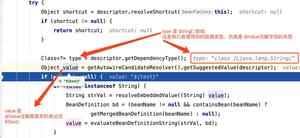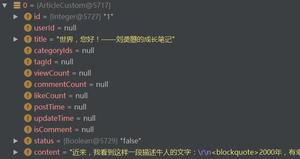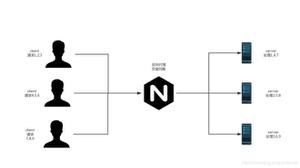Spring实战之获取其他Bean的属性值操作示例
本文实例讲述了Spring实战之获取其他Bean的属性值操作。分享给大家供大家参考,具体如下:
一 配置
<?xml version="1.0" encoding="GBK"?>
<beans xmlns:xsi="http://www.w3.org/2001/XMLSchema-instance"
xmlns="http://www.springframework.org/schema/beans"
xmlns:util="http://www.springframework.org/schema/util"
xsi:schemaLocation="http://www.springframework.org/schema/beans
http://www.springframework.org/schema/beans/spring-beans-4.0.xsd
http://www.springframework.org/schema/util
http://www.springframework.org/schema/util/spring-util-4.0.xsd">
<!--下面配置定义一个将要被引用的目标bean-->
<bean id="person" class="org.crazyit.app.service.Person">
<property name="age" value="30"/>
<property name="son">
<!-- 使用嵌套Bean定义setSon()方法的参数值 -->
<bean class="org.crazyit.app.service.Son">
<property name="age" value="11" />
</bean>
</property>
</bean>
<!-- 将指定Bean实例的getter方法返回值定义成son1 Bean -->
<bean id="son1" class=
"org.springframework.beans.factory.config.PropertyPathFactoryBean">
<!-- 确定目标Bean,指定son1 Bean来自哪个Bean的getter方法 -->
<property name="targetBeanName" value="person"/>
<!-- 指定son1 Bean来自目标bean的哪个getter方法,son代表getSon() -->
<property name="propertyPath" value="son"/>
</bean>
<!-- 简化配置
<util:property-path id="son1" path="person.son"/> -->
<!-- 下面定义son2 Bean -->
<bean id="son2" class="org.crazyit.app.service.Son">
<property name="age">
<!-- 使用嵌套Bean为调用setAge()方法指定参数值 -->
<!-- 以下是访问指定Bean的getter方法的简单方式,
person.son.age代表获取person.getSon().getAge()-->
<bean id="person.son.age" class=
"org.springframework.beans.factory.config.PropertyPathFactoryBean"/>
</property>
</bean>
<!-- 简化配置
<bean id="son2" class="org.crazyit.app.service.Son">
<property name="age">
<util:property-path path="person.son.age"/>
</property>
</bean> -->
<!-- 将基本数据类型的属性值定义成Bean实例 -->
<bean id="theAge" class=
"org.springframework.beans.factory.config.PropertyPathFactoryBean">
<!-- 确定目标Bean,表明theAge Bean来自哪个Bean的getter方法的返回值 -->
<property name="targetBeanName" value="person"/>
<!-- 使用复合属性来指定getter方法。son.age代表getSon().getAge() -->
<property name="propertyPath" value="son.age"/>
</bean>
<!-- 简化配置
<util:property-path id="theAge" path="person.son.age"/> -->
<!-- 将基本数据类型的属性值定义成Bean实例 -->
<bean id="theAge2" class=
"org.springframework.beans.factory.config.PropertyPathFactoryBean">
<!-- 确定目标Bean,表明theAge2 Bean来自哪个Bean的属性。
此处采用嵌套Bean定义目标Bean -->
<property name="targetObject">
<!-- 目标Bean不是容器中已经存在的Bean, 而是如下的嵌套Bean-->
<bean class="org.crazyit.app.service.Person">
<property name="age" value="30"/>
</bean>
</property>
<!-- 指定theAge2 Bean来自目标bean的哪个getter方法,age代表getAge() -->
<property name="propertyPath" value="age"/>
</bean>
</beans>
二 Bean
1 Person
package org.crazyit.app.service;
public class Person
{
private int age;
private Son son;
// age的setter和getter方法
public void setAge(int age)
{
this.age = age;
}
public int getAge()
{
return this.age;
}
// son的setter和getter方法
public void setSon(Son son)
{
this.son = son;
}
public Son getSon()
{
return this.son;
}
}
2 Son
package org.crazyit.app.service;
public class Son
{
private int age;
// age的setter和getter方法
public void setAge(int age)
{
this.age = age;
}
public int getAge()
{
return this.age;
}
public String toString()
{
return "Son[age=" + age + "]";
}
}
三 测试类
package lee;
import org.springframework.context.*;
import org.springframework.context.support.*;
import org.crazyit.app.service.*;
public class SpringTest
{
public static void main(String[] args)
{
ApplicationContext ctx = new
ClassPathXmlApplicationContext("beans.xml");
System.out.println("系统获取的son1:"
+ ctx.getBean("son1"));
System.out.println("系统获取son2:"
+ ctx.getBean("son2"));
System.out.println("系统获取theAge的值:"
+ ctx.getBean("theAge"));
System.out.println("系统获取theAge2的值:"
+ ctx.getBean("theAge2"));
}
}
四 测试结果
系统获取的son1:Son[age=11]
系统获取son2:Son[age=11]
系统获取theAge的值:11
系统获取theAge2的值:30
更多关于java相关内容感兴趣的读者可查看本站专题:《Spring框架入门与进阶教程》、《Java数据结构与算法教程》、《Java操作DOM节点技巧总结》、《Java文件与目录操作技巧汇总》和《Java缓存操作技巧汇总》
希望本文所述对大家java程序设计有所帮助。
以上是 Spring实战之获取其他Bean的属性值操作示例 的全部内容, 来源链接: utcz.com/z/336114.html








